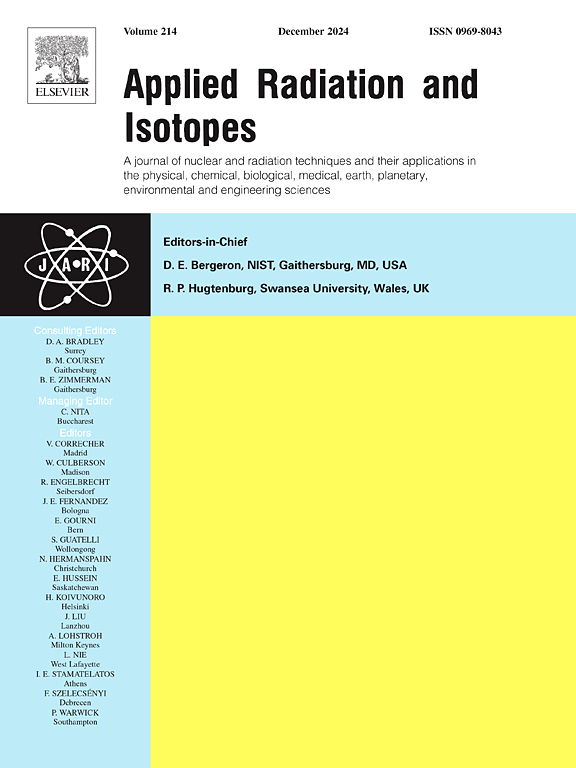Analysis of dosimetric properties of quartz crystals under gamma irradiation
IF 1.6
3区 工程技术
Q3 CHEMISTRY, INORGANIC & NUCLEAR
引用次数: 0
Abstract
This study explored the thermoluminescence (TL) properties of various quartz types (amethyst, citrine, rock crystal, and rose quartz) when exposed to gamma irradiation, assessing their potential for dosimetric applications. Key aspects such as heating rate, glow curves, dose-response behavior, linearity index, sensitivity, and fading characteristics were analyzed for each quartz type. The results revealed significant differences in TL performance among the quartz samples, with each type exhibiting distinct characteristics under gamma irradiation. Amethyst displayed the most reliable TL behavior, with strong linearity and stable dose-response relationships, making it the most suitable candidate for radiation dosimetry. These findings contribute valuable insights into the selection of optimal quartz materials for radiation measurement, enhancing the precision and reliability of TL-based dosimetric techniques.
求助全文
约1分钟内获得全文
求助全文
来源期刊

Applied Radiation and Isotopes
工程技术-核科学技术
CiteScore
3.00
自引率
12.50%
发文量
406
审稿时长
13.5 months
期刊介绍:
Applied Radiation and Isotopes provides a high quality medium for the publication of substantial, original and scientific and technological papers on the development and peaceful application of nuclear, radiation and radionuclide techniques in chemistry, physics, biochemistry, biology, medicine, security, engineering and in the earth, planetary and environmental sciences, all including dosimetry. Nuclear techniques are defined in the broadest sense and both experimental and theoretical papers are welcome. They include the development and use of α- and β-particles, X-rays and γ-rays, neutrons and other nuclear particles and radiations from all sources, including radionuclides, synchrotron sources, cyclotrons and reactors and from the natural environment.
The journal aims to publish papers with significance to an international audience, containing substantial novelty and scientific impact. The Editors reserve the rights to reject, with or without external review, papers that do not meet these criteria.
Papers dealing with radiation processing, i.e., where radiation is used to bring about a biological, chemical or physical change in a material, should be directed to our sister journal Radiation Physics and Chemistry.
 求助内容:
求助内容: 应助结果提醒方式:
应助结果提醒方式:


